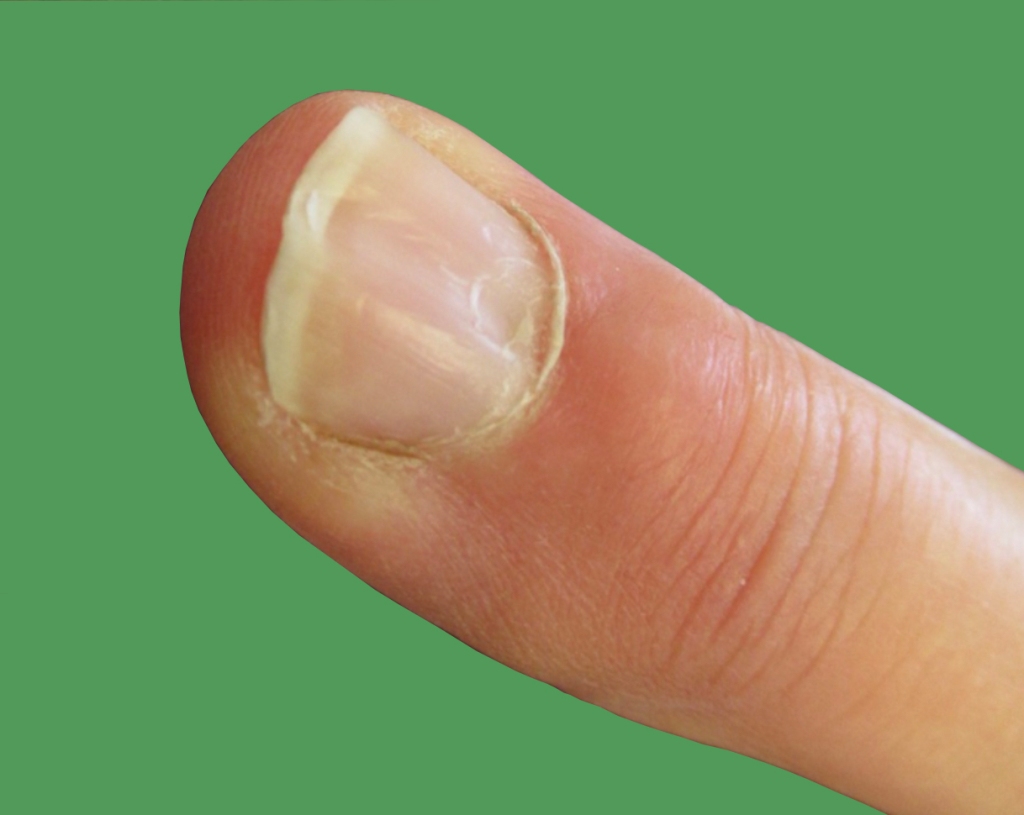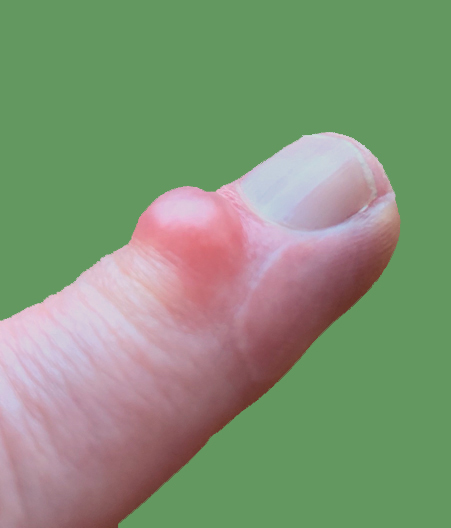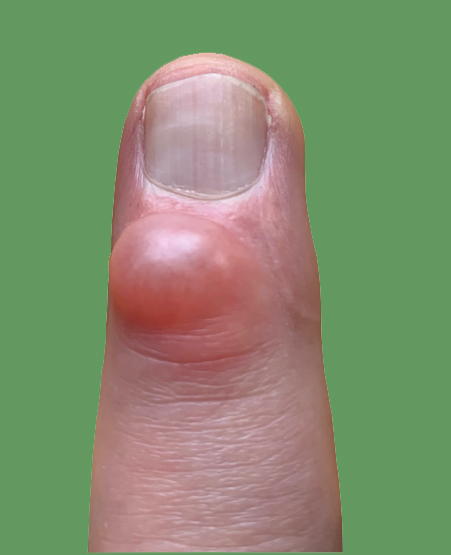What is a mucous cyst?
A mucous cyst is a harmless type of ganglion cyst; a fluid filled sac containing a thick jelly like fluid. They arise around the distal inter-phalangeal joints (the end joints) of the fingers and the end joint of the thumb.
What causes a mucous cyst?
Mucous cysts arise commonly from a joint with osteoarthritis. Arthritis can cause small spurs of bone (osteophytes) to develop around the joint, and these small bony spurs penetrate the capsule of the joint, allowing fluid from the joint to escape into the surrounding tissues. Cysts can occur without the underlying arthritis, and the cause here remains obscure.
What are the symptoms?
A mucous cyst presents as a small, painless swelling on the back of the finger near the DIP joint. Any finger can be affected. They can vary in size and can cause a “furrow” in the nail due to presence on the underlying nailbed. Most give little in the way of functional problems. Occasionally, the cyst can become very tense due to the build-up of fluid and some tenderness may develop. If they are knocked, some patients find that the cyst may discharge a clear jelly like fluid.

How is the diagnosis made?
The diagnosis of a mucous cyst is made clinically from its very characteristic appearance at the end of a finger. Investigation is rarely recommended.
What is the natural history?
Mucous cysts tend to fluctuate in size spontaneously, giving rise to symptoms when they are large and under pressure, and symptoms settling as the cyst diminishes. Most will eventually settle and disappear with time, but some are persistent. Occasionally, the cyst persistently discharges, becoming a nuisance and carrying the risk of infection.
Is there a risk of harm from a mucous cyst?
The vast majority of mucous cysts are completely harmless. Although rare, a persistently discharging cyst may become infected, and because of its communication with the joint, any infection will easily enter the finger joint and cause damage.
What treatment is recommended for a mucous cyst?
Because these cysts are generally harmless and often disappear with time, if there is no history of discharge, the recommendation from doctors is to leave these cysts along and not to worry about them. People who have a painful mucous cyst often think it should be removed. This is an option, but the natural history is usually in favour of not intervening initially, as most will resolve.
Are there any other options?
When considering whether something should be done about a mucous cyst, surgeons and patients should weigh up the risks of intervening versus the risks of doing nothing. Since there is very little risk of doing nothing, and definite risks associated with intervention, any procedure should be discussed and a shared decision made with the surgeon. There are 2 options for intervention:
Removal of the liquids contents of the cyst with a needle (aspiration) – We do not recommend aspiration due to the risk of the introduction of infection to the underlying joint.
Surgical removal of the cyst – Surgery remove the cyst may appear simple, but it can be tricky to remove the cyst and to definitively deal with the underlying bone spur responsible for the cyst. We usually offer surgery to patients who have had a symptomatic cyst for over a year, or where there is a specific issue relating to repeated discharge or skin problems. The operation to remove a mucous cyst involved lifting a skin flap over the cyst and after removing the cyst, the underlying joint is opened and any underlying bone spur removed. Surgery does not, however, cure the underlying arthritis, so it is possible for a mucous cyst to recur with time.
There are a number of risks associated with surgery which may leave patients worse off following an operation that they were before. These risks include infection, joint stiffness, problems with the overlying skin and cyst recurrence.
For these reasons, the satisfaction rate following removal of mucous cysts is generally lower than for most other routine hand operations. You can read about having a hand operation here.

© Lothian Virtual Hand Clinic 2023

